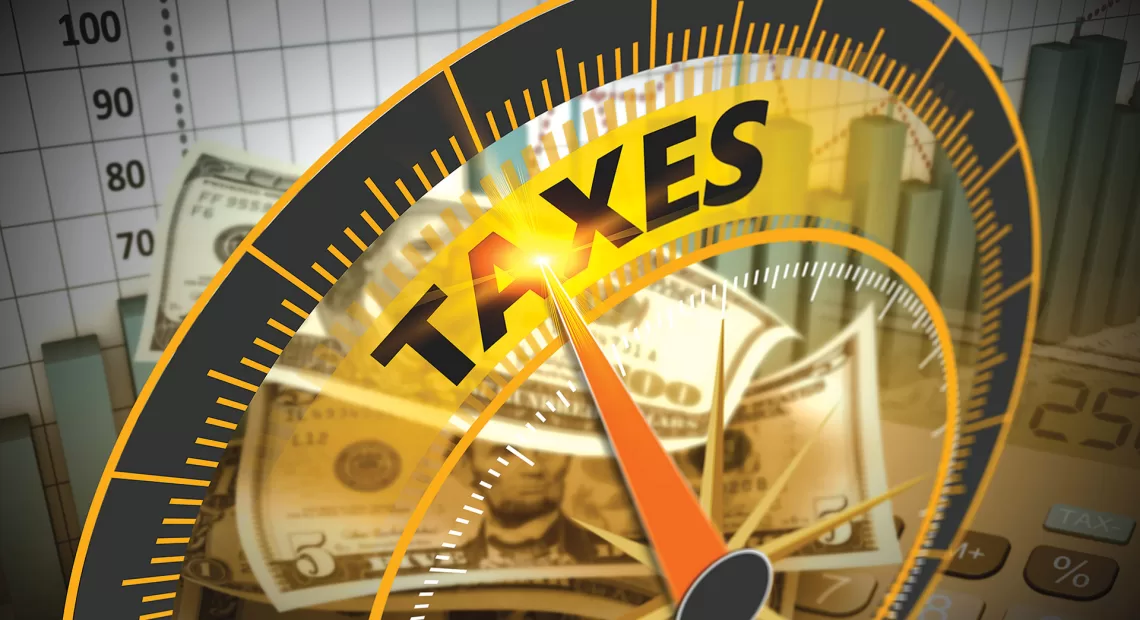
Examining the Impact of the American Families and Workers Act of 2024
Potential Tax Relief
By Kristina Drzal Houghton, CPA

This article, written on Feb. 2, highlights the U.S. House of Representatives’ Jan. 31 passage of the Tax Relief for American Families and Workers Act of 2024 (H.R. 7024). However, it’s important to note that the details are subject to change pending the Senate’s vote and the ultimate signing into law by the president.
Despite concerted efforts to get the bill to the Senate in time for the current tax-filing season, this deadline has unfortunately lapsed, causing some concern over timing and efficacy. However, lawmakers remain optimistic about swift passage in the subsequent stages, aiming to minimize the impact on the IRS and enable prompt relief for taxpayers.
INDIVIDUAL TAX RELIEF
One of the core components of this legislation includes an increase in the child tax credit, a move set to benefit families with children across the nation. This concept is further strengthened by the introduction of a refundable portion determined per child, a clear advantage for growing families.
The proposed bill introduces a single change regarding the child tax credit. Currently, the credit is $2,000 per child for taxpayers who do not exceed certain income thresholds. A portion of this credit can be refunded up to $1,600 in 2023. The refundable portion is limited based on the number of qualifying children and the taxpayer’s earned income.
Under the proposed law, the refundable amount will be calculated per child, resulting in a total refundable amount. This change applies to the 2023-25 tax years. Additionally, the maximum amount of the refundable credit will be increased to $1,800 for 2023, $1,900 for 2024, and $2,000 for 2025. The overall child tax credit will also be adjusted for inflation from 2024 onward.
“One of the core components of this legislation includes an increase in the child tax credit, a move set to benefit families with children across the nation. This concept is further strengthened by the introduction of a refundable portion determined per child, a clear advantage for growing families.”
Notably missing from this legislation was a provision that addresses an aspect of the state and local tax deduction, which was capped at $10,000 by the Tax Cuts and Jobs Act in 2017. The $10,000 cap applies to taxpayers filing either single or married filing jointly. Advocates were hoping for a provision to increase the married filing joint cap to be twice the single cap and eliminate that marriage penaly.
BUSINESS TAX RELIEF
In a bid to support the innovative spirit of America, the Tax Relief for American Families and Workers Act also includes provisions to delay the requirement to capitalize and amortize research and experimentation expenditures. This is further bolstered by an extension of the 100% bonus depreciation for properties in service prior to Jan. 1, 2026.
For the hardworking business sector, the Act provides an increase in the Code Sec. 179 deduction limitation and expense limitation for property put into service post-2023.
Research and Experimental Expenses
Under current law, domestic research and experimental expenditures incurred in tax years starting after Dec. 31, 2021 must be amortized over five years. Previously, these expenses could be immediately deducted in the year they were paid or incurred. Research or experiment costs outside the U.S. are deductible over a 15-year period. The proposed law would postpone the application of this rule for research and experimental costs related to domestic activities until tax years starting after Dec. 31, 2025. There will be no change for activities outside the U.S. The bill includes transitional rules for research credits and accounting changes.
Observation: H.R. 7024 provides that a taxpayer can reflect the retroactive application of Section 174 expensing via a change in method of accounting with either a one-year Section 481(a) adjustment or an elective two-year Section 481(a) adjustment. Alternatively, eligible taxpayers generally would be permitted to amend their first tax year beginning on or after Jan. 1, 2022, to reflect current expensing of eligible Section 174 expenditures. Due to the late passage of this bill, businesses may want to consider applying for an extension of time to file their returns so they can analyze which of the three options is most beneficial for them.
Business Interest Limitation
Under current tax law, prior to 2022, the calculation of adjusted taxable income for the business interest expense limitation (Code Sec. 163(j)) excluded deductions for interest, taxes, depreciation, amortization, or depletion (IBITDA). However, starting from 2022, only deductions for interest and taxes were considered, excluding depreciation, amortization, and depletion. The new law would reintroduce depreciation, amortization, and depletion for tax years starting after Dec. 31, 2023, and before Jan. 1, 2026. Additionally, taxpayers can choose to include depreciation, amortization, and depletion for tax years beginning after 2021 and before 2024.
Observation: H.R. 7024 provides that a taxpayer can reflect the retroactive application of using IBITDA to calculate the interest limitation. The bill does not provide as much information on how to effect the retroactive elction as it does with Section 174. Taxpayers with large limitation in 2022 may find it advantageous to amend their returns for this retroactive adoption. It is also unclear if you can elect to provide the provision for 2023 without amending 2022.
For the hardworking business sector, the Act provides an increase in the Code Sec. 179 deduction limitation and expense limitation for property put into service post-2023.
Bonus Depreciation
The most recent change, under the Tax Cuts and Jobs Act of 2017, allowed for immediate expensing of qualified property placed in service between Sept. 17, 2017 and Jan. 1, 2023 (100% bonus depreciation). Starting in 2023, the first-year depreciation gradually reduces (80% in 2023, 60% in 2024, 40% in 2025, 20% in 2026) until it is eliminated for property placed in service in 2027. The proposed bill extends 100% bonus depreciation for property placed in service before Jan. 1, 2026 (Jan. 1, 2027 for longer production period property and certain aircraft). In 2026 and 2027, the 20% and 0% bonus depreciation rates would continue to apply.
Increased 179 Deduction
Under current law, businesses can choose to expense certain qualifying property instead of depreciating it. This includes tangible personal property, off-the-shelf computer software, and qualified real property used in the active conduct of a trade or business. The deduction is limited to an inflation-adjusted amount. In 2024, the deduction is capped at $1.22 million, reduced dollar-for-dollar by expenses exceeding $3.05 million.
Employee Retention Credit
The Employee Retention Tax Credit (ERTC) was established in March 2020 during the COVID-19 pandemic. The purpose of the credit was to provide businesses with a credit against certain payroll taxes if they retained employees during lockdowns that may have impacted their income. The American Rescue Plan Act of 2021 extended the credit and expanded its scope to include Medicare taxes and dropped the precentage threshold for revenue decrease establishing eligibility for the credit. Taxpayers were able to make ERTC claims until April 15, 2025, despite the expiration of the period for which the credit can be claimed.
The IRS has identified fraudulent claims made by taxpayers, often unknowingly, facilitated by third-party processors (COVID-ERTC promoters) who boldly advertised on television and plagued businesses with calls implying that almost any business qualified due to facts and circumstances. To address this issue, the IRS temporarily suspended the acceptance of new claims in late 2023 while investigating potential instances of fraud in its backlog. Additionally, an amnesty program was established for taxpayers to voluntarily withdraw unqualified claims or repay the credit without penalty.
The proposed bill aims to combat fraudulent claims by increasing penalties for COVID-ERTC promoters, extending the limitations period on assessments of ERTC claims to six years, and imposing reporting requirements on COVID-ERTC promoters similar to promoters of listed transactions. Notably, the bill sets Jan. 31, 2024 as the deadline for making ERTC claims.
In Addition
In an effort to reduce compliance burdens on businesses, the Act raises the filing threshold for Form 1099-NEC and 1099-MISC from $600 to $1,000 for payments post-Dec. 31, 2023. The $1,000 will be adjusted for inflation.
IN SUMMARY
In essence, the Tax Relief for American Families and Workers Act of 2024 is a comprehensive package addressing varied aspects of the American economic landscape with a keen eye on relief and progression. These changes aim to promote economic growth, support independent contractors and businesses, and address housing affordability concerns.
While the House’s passage of the Act marks a significant milestone, it’s important to keep a vigilant eye on the upcoming Senate proceedings, as the Act still requires approval there before becoming law.
Kristina Drzal Houghton, CPA is a partner at the Holyoke-based accounting firm Meyers Brothers Kalicka, P.C.





